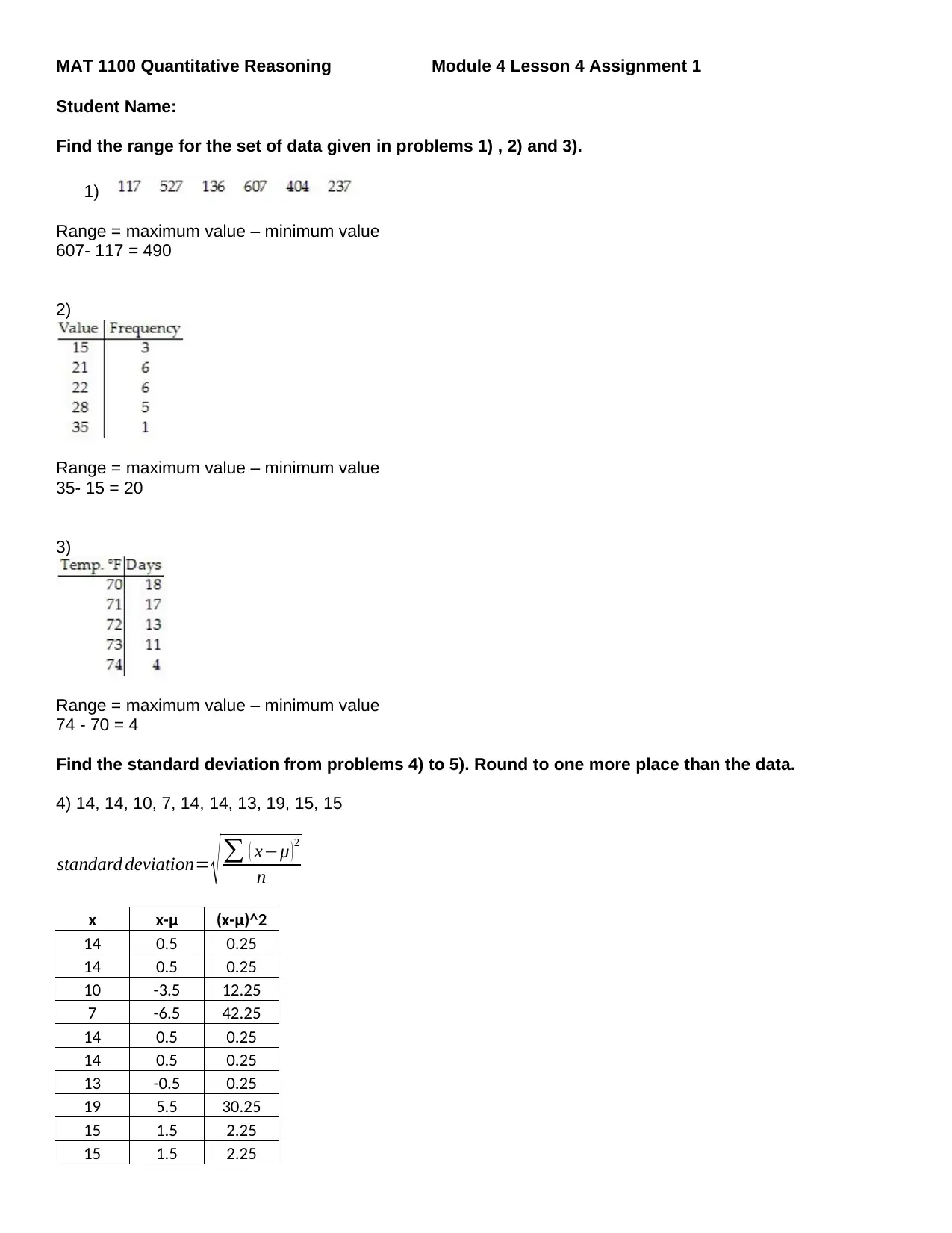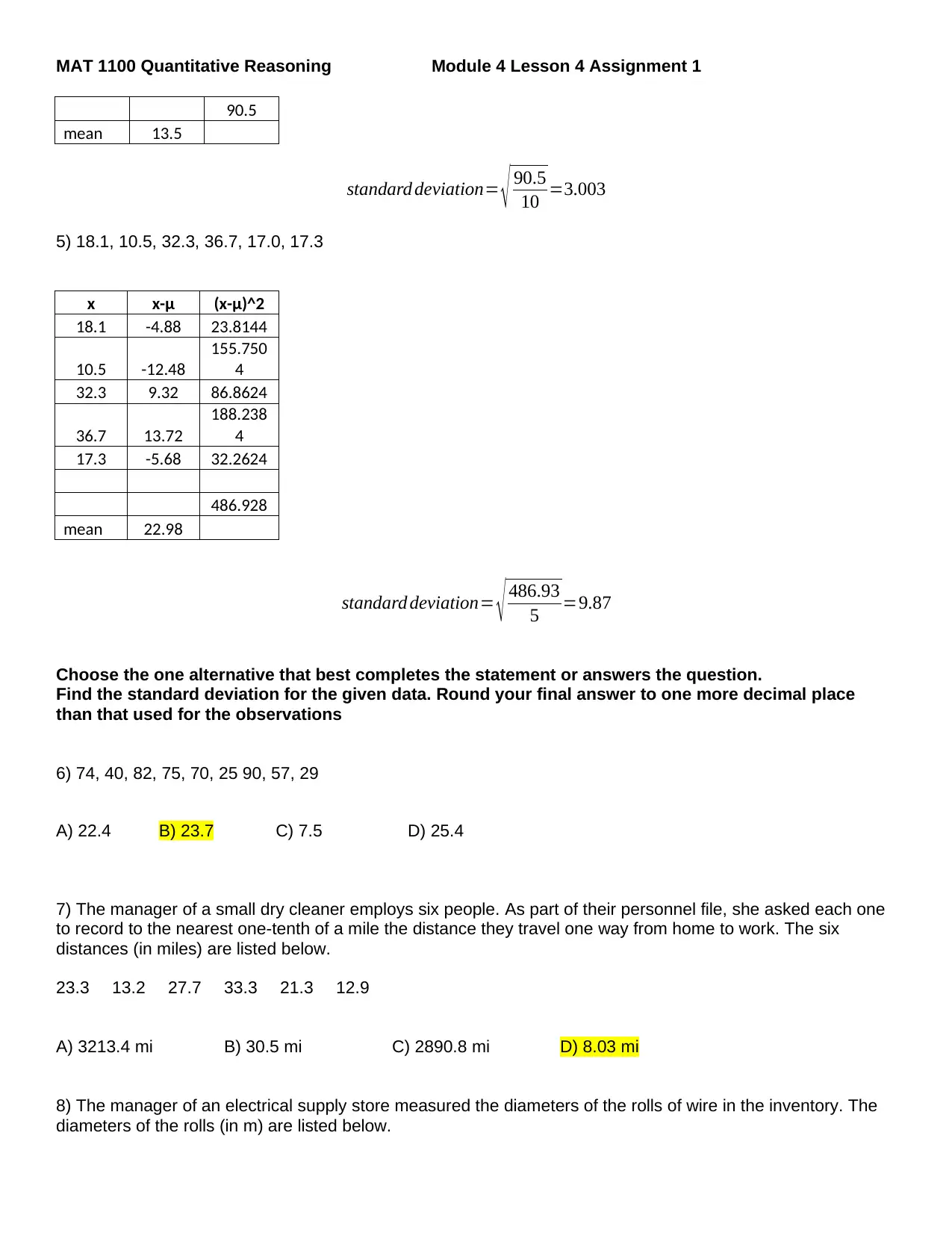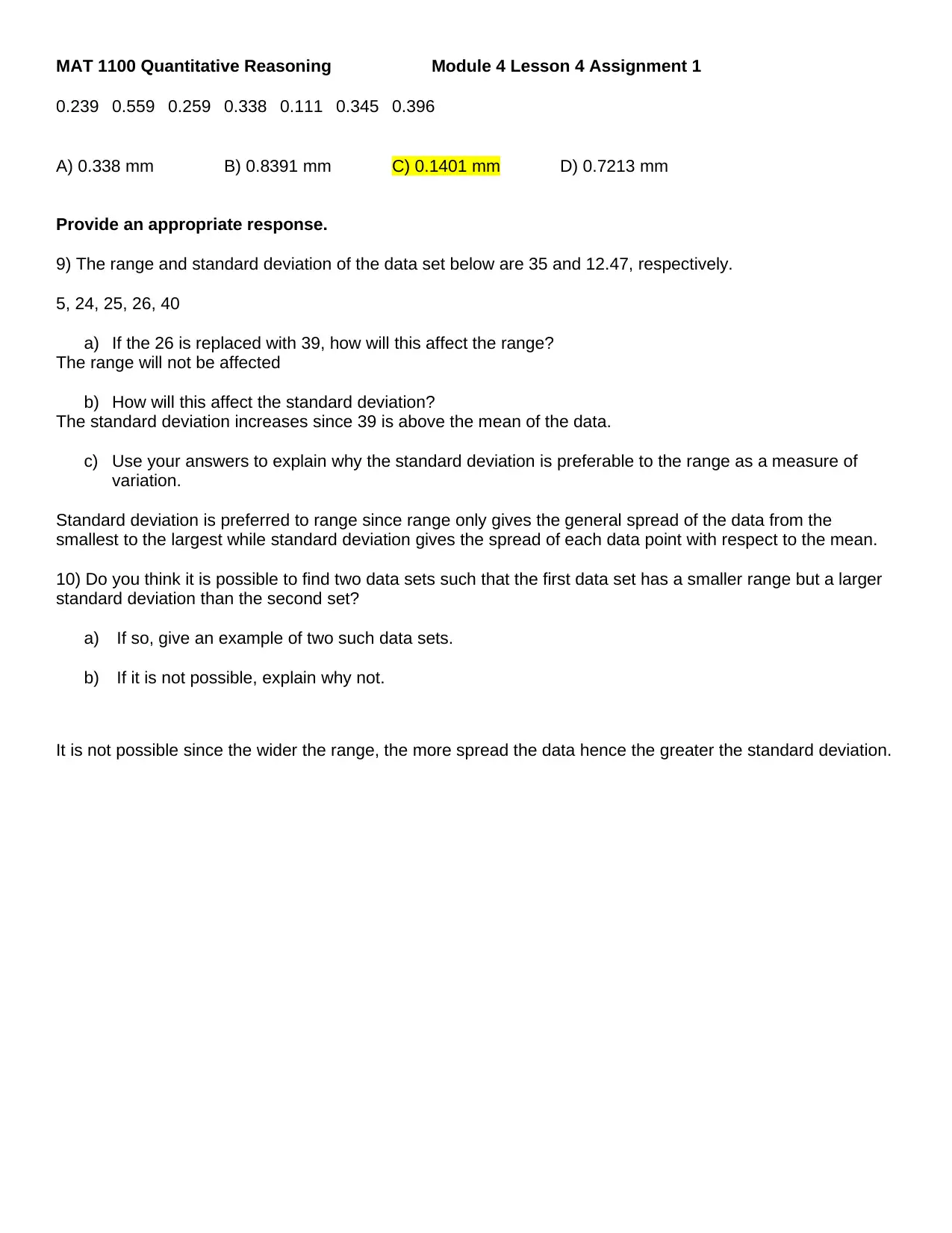Quantitative Reasoning: MAT 1100 Module 4 Lesson 4 Assignment 1
VerifiedAdded on 2023/02/01
|3
|657
|76
Homework Assignment
AI Summary
This assignment solution for MAT 1100 Quantitative Reasoning, Module 4, Lesson 4, focuses on calculating the range and standard deviation for given data sets. The solution demonstrates the step-by-step process for finding the range (maximum value minus minimum value) and standard deviation. Problems include calculating these measures for various data sets, rounding to the appropriate decimal places. Additionally, the assignment includes multiple-choice questions testing the understanding of standard deviation calculations and their application to real-world scenarios, such as distances traveled by employees and diameters of wire rolls. The assignment also includes a critical thinking question analyzing how changes in data affect the range and standard deviation, and comparing the usefulness of these two measures of variation. The provided answers offer clear explanations and justifications for each step, providing a comprehensive guide to understanding and solving the problems.
1 out of 3





![[object Object]](/_next/static/media/star-bottom.7253800d.svg)